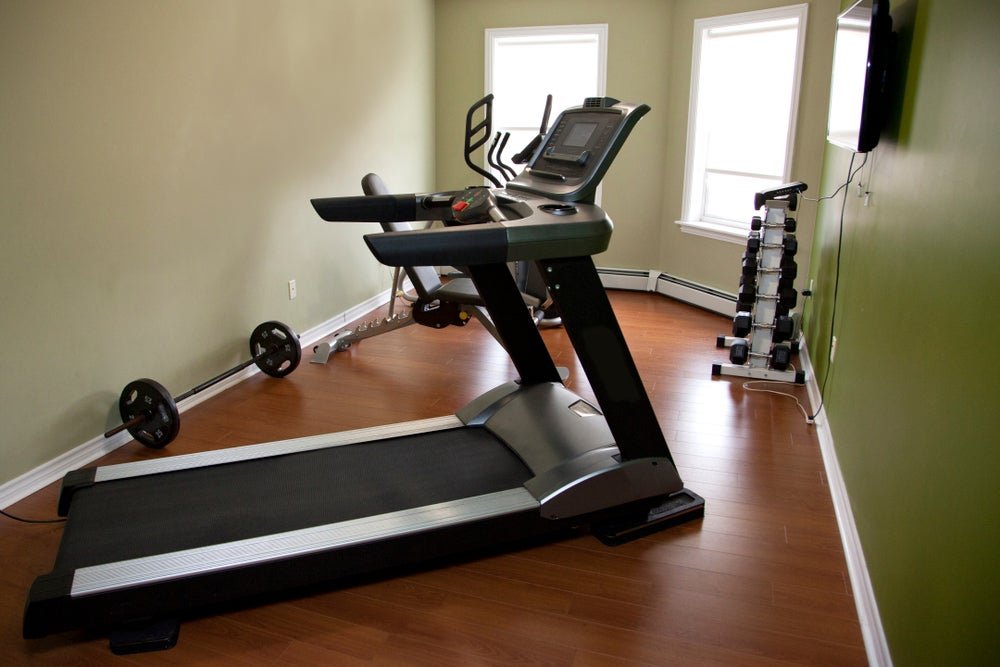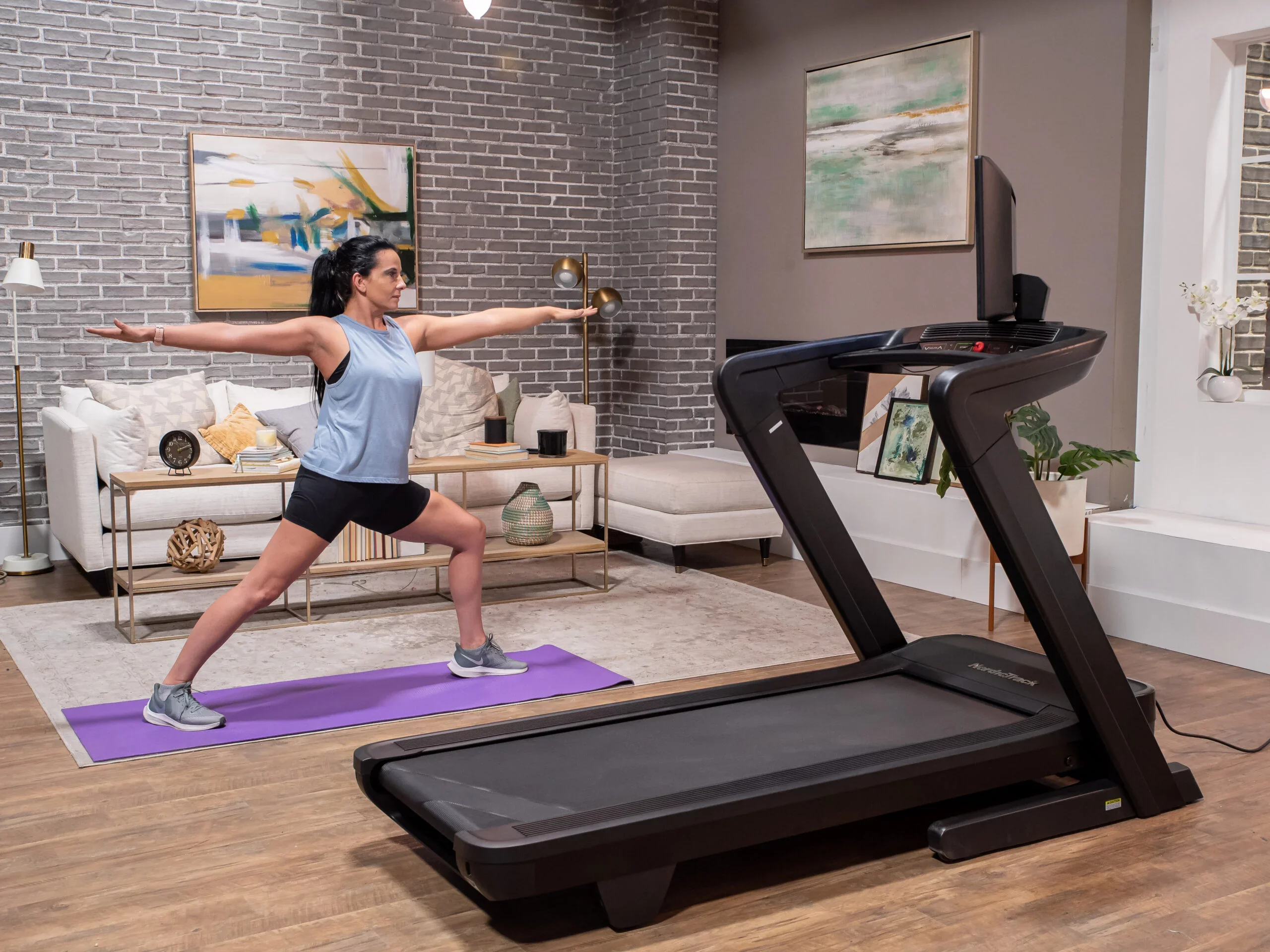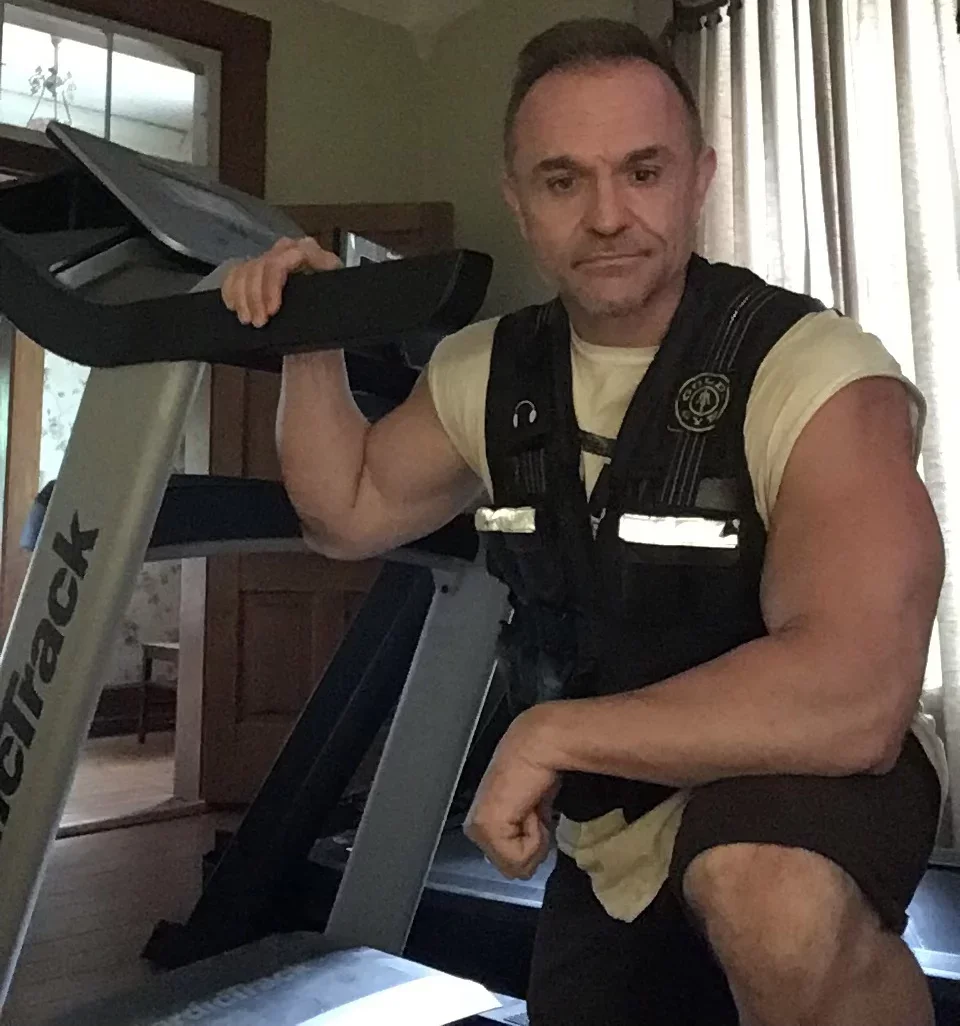
[ad_1]
The treadmill, often lauded as the king of cardio equipment, is a staple in home gyms and commercial fitness centers alike. I’ve had one in my own home for years as I test them regularly. The treadmill is an undeniable champion for cardiovascular health, endurance, and lower-body strength. But what if you’re looking for more? Over the years I’ve found tons of research to affirm that combining strength training and cardio is winning combo. But what if you want to engage your entire physique, from head to toe, without stepping off the treadmill or needing a gym full of equipment?
Good news: your trusty treadmill is far more versatile than you might think. By intelligently integrating strength, core, and even upper-body movements into your routine, you can transform a simple walk or run into a dynamic, full-body fitness experience. This isn’t just about efficiency; it’s about maximizing your workout’s impact, improving overall functional fitness, and even boosting calorie burn by engaging more muscle groups.
In this comprehensive guide, I’ll dive deep into how to leverage your treadmill for a truly holistic workout, incorporating strategies and exercises informed by sports science and fitness research.

The iFit program offers thousands of workouts you can do off the treadmill. The tilt/pivot touchscreen and amplified premium sound system allows you to easily follow programming in just about any position. Photo by: Oleksandr Kosheliev / TreadmilReviews.net
The Foundation: Maximizing Lower Body Engagement
Before I hit on the “full-body” elements, let’s ensure your lower body is getting the most out of your treadmill time. While walking and running are excellent, strategic adjustments can significantly amplify their effect on your glutes, hamstrings, quads, and calves.
1. Embrace the Incline: This is perhaps the simplest yet most effective way to intensify your lower body workout. Walking or running on an incline dramatically increases the activation of your posterior chain muscles – specifically the glutes and hamstrings. You can read my article here on the benefits of decline training as well.
- The Science: Research has consistently shown that incline walking increases muscle activation in the gluteus maximus, gastrocnemius (calf), and vasti muscles (quads) compared to level-ground walking. A study published in the journal Frontiers of Human Neuroscience revealed an increase in average EMG muscle activation with incline, particularly in the gluteus maximus, gastrocnemius, vastus lateralis, rectus femoris, and soleus muscles. This indicates a direct correlation between incline and muscle engagement. Higher inclines (e.g., 10-15%) can even transition gait patterns from a pendulum swing to a “walking lunge,” further challenging these muscle groups. This is also supported by work in the Journal of Strength and Conditioning Research here.
- Application: Incorporate incline intervals (e.g., 5 minutes at 5% incline, 5 minutes at 10% incline, returning to flat for recovery) or dedicate entire sessions to incline walking. The popular “12-3-30” workout (12% incline, 3 mph, 30 minutes) is a prime example of an incline-focused routine gaining traction for its glute and hamstring benefits.
2. Speed and Interval Training: Varying your speed, from brisk walking to jogging or sprinting, engages different muscle fibers and boosts cardiovascular output. High-Intensity Interval Training (HIIT) on a treadmill is a fantastic way to maximize calorie burn and improve anaerobic fitness.
- The Science: Interval training, characterized by short bursts of intense activity followed by recovery periods, has been shown to elicit similar or greater adaptations than moderate-intensity continuous training, despite a lower total exercise volume. HIIT specifically promotes muscle growth and can reverse age-related muscle deterioration.
- Application: Design your own intervals: 1-minute sprint, 2-minute walk/jog recovery, repeated 8-10 times. Or use pre-programmed HIIT workouts available on many modern treadmills.
Engaging Your Upper Body: Beyond Just Arm Swings
This is where the “full-body” transformation truly begins. While your arms naturally swing during a run, actively engaging your upper body muscles can significantly enhance your workout.
1. Treadmill-Friendly Dumbbell Exercises: With light dumbbells, you can perform various upper-body exercises while walking at a controlled pace. I’d recommend checking out a low-cost pair, or perhaps even these adjustable dumbbells. Sole, NordicTrack, ProForm, Horizon, and Bowflex, all offer packages with the purchase of their treadmills.
- Bicep Curls: Hold dumbbells at your sides, palms facing up, and curl towards your shoulders.
- Hammer Curls: Similar to bicep curls, but with palms facing each other.
- Overhead Press (Light Weight): Hold dumbbells at shoulder height, palms facing each other, and press overhead. Keep the weight light to maintain balance and avoid strain while walking.
- Lateral Raises: Hold dumbbells at your sides, palms facing your body, and lift arms out to the sides to shoulder height.
- Front Raises: Hold dumbbells in front of your thighs, palms facing your body, and lift arms forward to shoulder height.
- Triceps Kickbacks: Hinge slightly at the hips, bend elbows, and extend arms straight back, squeezing triceps.
Important Safety Note: Always start with very light weights and a slow walking pace. Focus on control and form. If you feel unsteady, stop the treadmill and perform these exercises off to the side. Never try to run with weights.
2. Resistance Band Integration: Resistance bands offer a versatile and low-impact way to add resistance to your upper body without the balance challenges of dumbbells.
- Band Pull-Aparts: Hold a resistance band with both hands in front of you, arms extended. Pull the band apart, squeezing your shoulder blades together.
- Overhead Band Pulls: Hold a resistance band overhead with both hands, slightly wider than shoulder-width. Pull it down behind your head, engaging your lats and upper back.
- Band Rows: Anchor a resistance band to something sturdy in front of the treadmill (or use a loop band under your feet while standing stationary on the sides) and perform rowing motions, squeezing your back muscles.
3. Strategic Arm Swings: Even without weights, conscious arm pumping during your walk or run can engage your shoulders and upper back. Focus on driving your elbows back and forth, keeping your arms at a 90-degree angle. This not only boosts calorie expenditure but also improves running form and efficiency.
Strengthening Your Core: The Unsung Hero of Treadmill Workouts
Your core muscles (abdominals, obliques, lower back) are constantly working as stabilizers during walking and running. However, you can make them work harder with targeted exercises.
1. Posture and Engagement: The simplest core exercise on a treadmill is mindful posture. Engage your core by drawing your naval towards your spine, keeping your shoulders back and down, and maintaining a tall, aligned posture. Avoid slouching or leaning on the handrails.
2. Treadmill Planks (Modified): While not a traditional plank, you can use the treadmill to engage your core differently.
- Walking Plank (Incline): At a moderate incline and slow speed, place your hands on the handrails (or the console if stable) and walk, maintaining a rigid plank-like body position. This engages your core as you resist the incline and movement.
- Side Shuffles on Treadmill: With the treadmill at a very low speed (1-2 mph) and no incline, carefully turn sideways and shuffle. This engages your obliques and hip abductors.
3. Off-Treadmill Core Intervals: The most effective way to work your core is often to step off the treadmill. Incorporate short core circuits during your walking or running intervals.
Example Circuit:
- 3-5 minutes treadmill walk/run
- STOP treadmill, step off:
- 30 seconds Plank
- 30 seconds Bicycle Crunches
- 30 seconds Russian Twists
- 30 seconds Mountain Climbers (can be done off-treadmill)
- GET BACK ON treadmill: Repeat run/walk.
The Science: Combining high-intensity bursts on the treadmill with bodyweight exercises like planks, crunches, and mountain climbers can significantly increase calorie burn and provide a comprehensive full-body workout. These bodyweight exercises recruit multiple muscle groups, including the core stabilizers, which complement the primary movement of running.
Incorporating Dynamic Strength & Mobility
A truly full-body workout also incorporates dynamic movements that challenge your strength and mobility.
1. Bodyweight Exercises During Intervals: Instead of just resting during your active recovery periods, step off the treadmill and perform bodyweight exercises.
- Squats: Work your quads, glutes, and hamstrings.
- Lunges (Forward, Reverse, Lateral): Excellent for lower body and balance.
- Push-ups: Engage your chest, shoulders, and triceps. (Can be done on the floor or inclined against the treadmill console for an easier modification).
- Glute Bridges: Strengthen your glutes and hamstrings.
- Calf Raises: Target your calves directly, often overlooked.
- Burpees (Advanced): A fantastic full-body cardio and strength builder.
Example Full-Body Interval Workout:
- Warm-up (5 minutes): Light walk/jog at a comfortable pace.
- Round 1 (Lower Body Focus):
- 3 minutes: Incline walk/jog (5-8% incline)
- STOP treadmill, step off: 1 minute of Squats + 1 minute of Lunges (alternating legs)
- Rest 30 seconds
- Round 2 (Upper Body Focus):
- 3 minutes: Moderate pace walk/jog (low incline or flat)
- STOP treadmill, step off: 1 minute of light Dumbbell Bicep Curls + 1 minute of Resistance Band Pull-Aparts
- Rest 30 seconds
- Round 3 (Core Focus):
- 3 minutes: Brisk walk/light jog (flat)
- STOP treadmill, step off: 1 minute Plank + 1 minute Russian Twists
- Rest 30 seconds
- Repeat Rounds 1-3: For 2-4 cycles depending on time and fitness level.
- Cool-down (5 minutes): Slow walk, gradually decreasing speed and incline.
Advanced Considerations for a Full-Body Blast

This 45-pound weight vest I bought in 2010 has been a great workout partner for both cardio or strength training.
- Weighted Vests: For an added challenge, wearing a weighted vest during incline walking or running can significantly increase calorie expenditure and muscle engagement, particularly in the lower body and core, making the workout more demanding. Always start with light weight and consult a professional if new to this. You can read my article about weighted vest training here.
- Dynamic Warm-up & Static Cool-down: Don’t forget the importance of pre- and post-workout stretching.
- Dynamic Stretching (Pre-workout): Movements like leg swings, arm circles, torso twists, and walking lunges increase blood flow, warm up muscles, and improve range of motion, reducing injury risk before your treadmill session.
- Static Stretching (Post-workout): Holding stretches for 20-30 seconds after your workout can improve flexibility, reduce muscle soreness, and aid in recovery. Target major muscle groups worked, especially hamstrings, quads, calves, and chest.
Conclusion
Your treadmill is more than just a cardio machine; it’s a versatile fitness tool capable of delivering a comprehensive, full-body workout. By thoughtfully incorporating incline variations, strategic speed intervals, upper-body exercises with light weights or resistance bands, and targeted core engagement, you can maximize your time and effort.
Remember to prioritize safety, listen to your body, and progress gradually. Start with shorter integrated sessions and slowly increase duration or intensity as your strength and stamina improve. The goal is to build a well-rounded fitness routine that not only improves your cardiovascular health but also strengthens and tones your entire body. So, next time you step onto that belt, think beyond just steps – think full-body fitness!
[ad_2]
Source link





